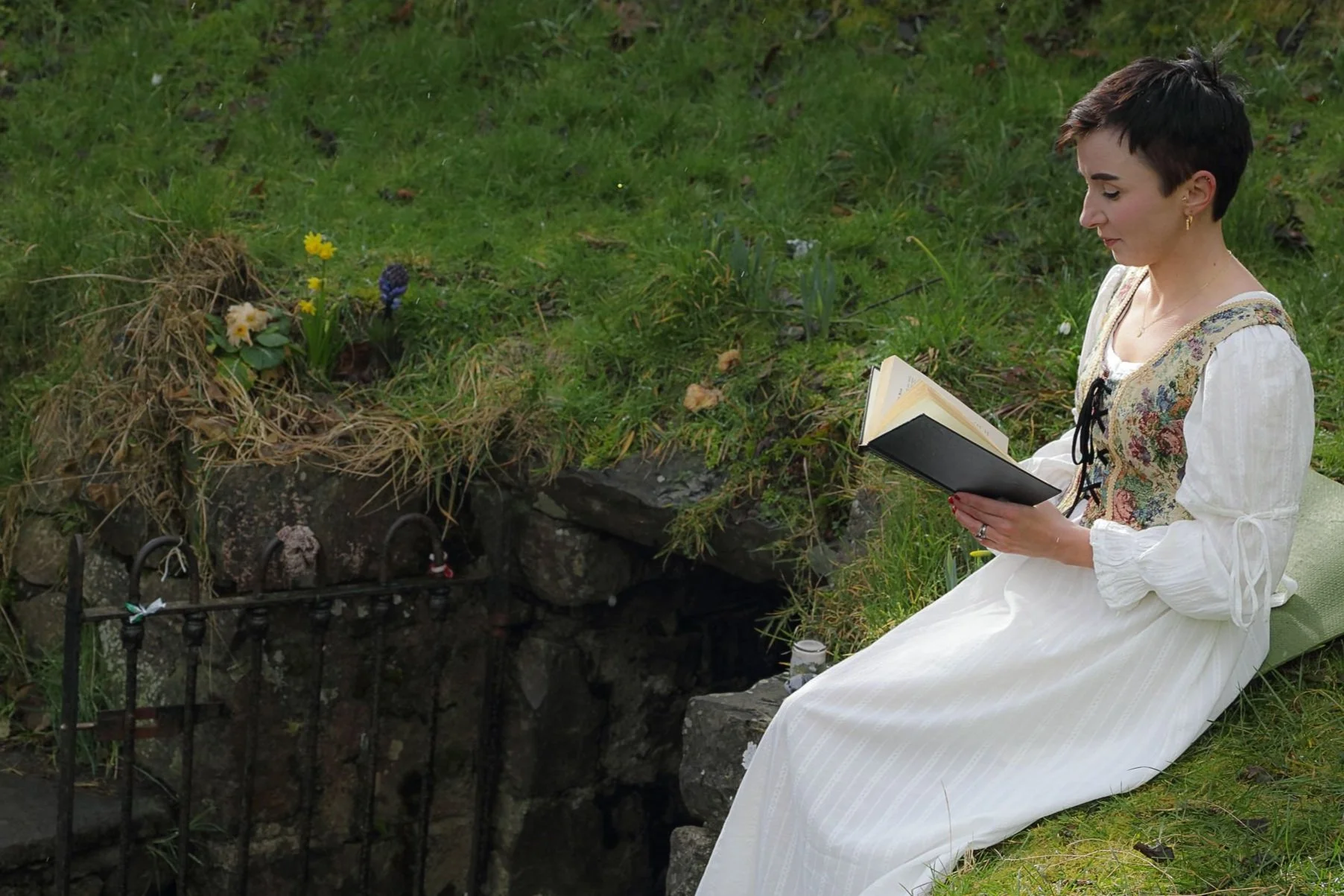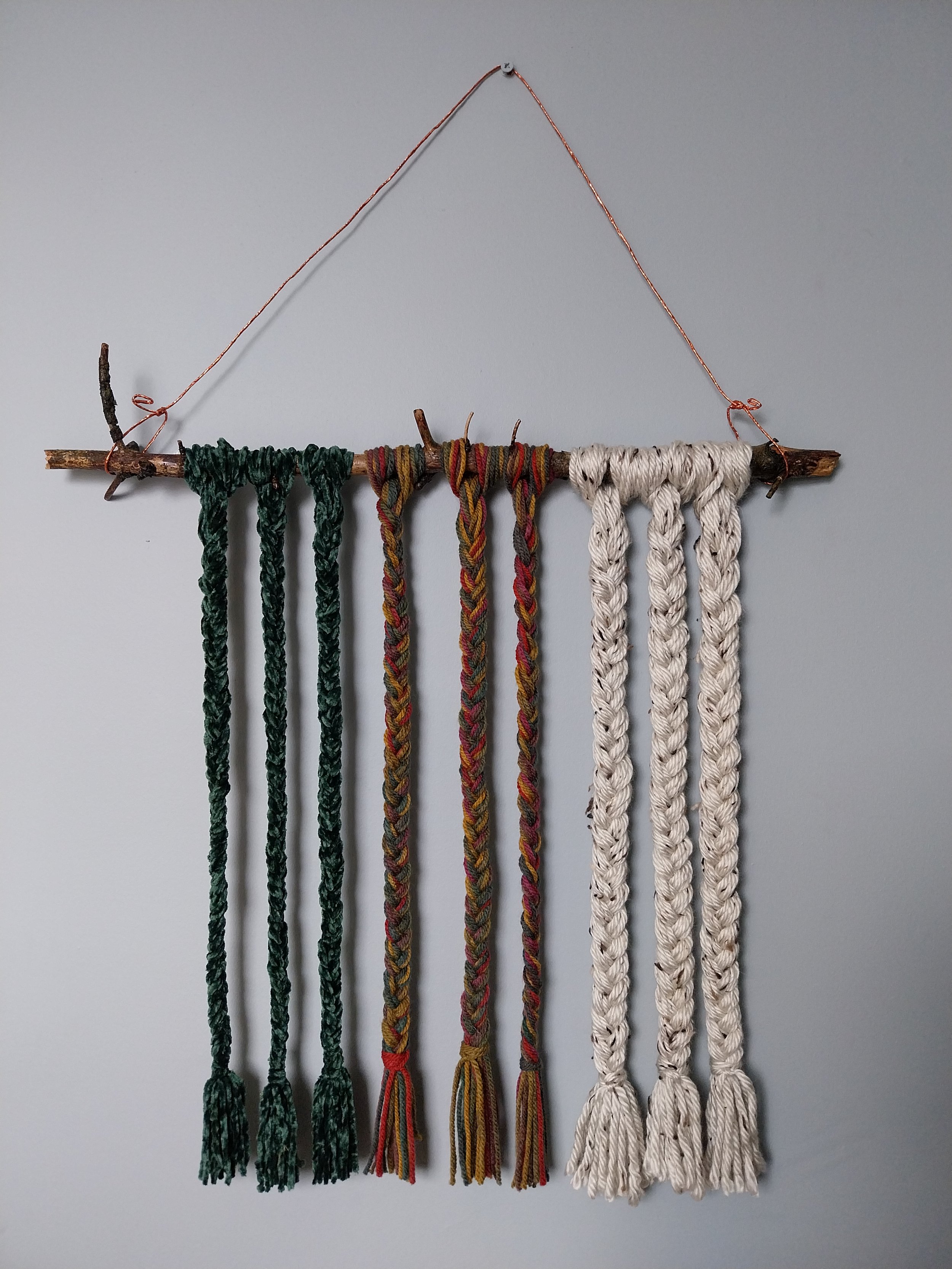
MUSINGS FROM THE OTHERWORLD
My current writings and musings on Celtic feminine mysticism and soulful living now find their home on Substack. I invite you to join me there but I’ve also preserved an archive of my previous writings (2021-2023) below.
Mythical Arts Practice: The Morrígan’s Tresses
This image of the Morrígan’s nine loose tresses became a source of fios for me. Thrice the sacred triple, nine is a mystical number in Celtic mythology. The nine tresses of the Morrígan unbraid themselves and flow outwards to other sacred nines…
The Mythical Arts
Today, I share a nourishing, enlivening and powerful mythical arts practice with you.
So what do I mean by the ‘mythical arts’?
Well firstly, art can be an embodiment process, an experience of the body. Art is often infused by fios, the Irish word for otherworldly knowledge or wisdom gained through divine inspiration in relationship with the Otherworld, or imbas the light of foresight - but it is brought into form through the body.
Secondly, the mythical arts is any way that we breathe life into our mythology through our creative expression. This could be storytelling, poetry, written word, drawing, painting, crafting, sculpting, song, music, movement, dance, theatre, photography, film-making, herbalism, gardening… I could go on and on.
In fact, for the mythical arts practice I’ll be sharing with you today, I don’t know what category it falls into. Crafting perhaps… it doesn’t matter. The mythical arts is about allowing your fios to flow through you into form. Whatever form looks like to you.
You do not need to be an ‘artist’, you simply need to be your own Bean Feasa, the wise woman or Duine Feasa the wise person who embraces their fios and allows it to flow.
Tresses of the Morrígan
I call this practice ‘The Morrígan’s Tresses’, which came from my leadership programme, the Sovereignty Goddess Incubator. The Morrígan or Morrigan is an embodiment of the dark feminine in the Irish mythical tradition. Creation and death, life-giving, life-taking, are dual aspects of the Great Mother of birth, life, death, and rebirth. As a descendant of this Great Mother energy, the Morrígan is an expression of the darker, necessary aspects of the human experience.
Like the Hindu Goddess Kali, she is a destroyer often destroying what needs to die within ourselves so that we can become more alive. And like the Sumerian Goddess Inanna, she bestows kingship through her strategy, sexual potency, magical shapeshifting and seership as a goddess of sovereignty and war.
In one of her core myths, Cath Maige Tuired, we encounter the Morrígan at a ford in the River Unshin in Co. Sligo. It is Samhain when the veil between worlds is thinnest. The Great Goddess straddles this liminal time with one foot on the river bank to the south, one foot on the bank to the north, her vulva present over the water’s roaring flow. Nine loose tresses fall from her head. It is here that herself and the Dagda, the great god of the Tuatha Dé Danann lie together. So that this place becomes known as the ‘Bed of the Couple', and later, as the ‘Ford of Destruction’ - again fertility and destruction, life and death at play together.
The Number Nine
This image of the Morrígan’s nine loose tresses became a source of fios for me. Thrice the sacred triple, nine is a mystical number in Celtic mythology. The nine tresses of the Morrígan unbraid themselves and flow outwards to other sacred nines:
🌀Nine waves that the Tuatha Dé Danann cast into a storm to stop the Milesians, our human ancestors, from first landing upon Irish shores
🌀Nine hazel trees that drop their hazelnuts into the Well of Segais where salmon swallow them whole and wisdom bubbles. This wisdom is liberated into the land by the Goddess Bóinn, who becomes the River Boyne and similarly, the story of Connla's Well liberated by the Goddess Sinend, the River Shannon
🌀Nine white deer, the symbol of Gobnait, obscure sister saint of Brigid, and her place of resurrection, where she becomes a woman unto herself
🌀Nine generations of birthing pangs that horse goddess Macha with her dying breath spell-casts upon the men of Ulster
🌀Nine Morgens of the Isle of Avalon who were skilled priestesses in astronomy, astrology, mathematics, healing, music, herbal lore, and shapeshifting
I have no doubt there are many more.
Your Nine Braids
And so, you will create your nine tresses of the Morrígan in honour of the Goddess and all of these sacred symbols of nine. You will braid them together with incantation as healing threads. Some say the Morrígan is the mother of Goddess Brigid, and like you would weave a Brigid's cross for protection, here will weave:
Three braids of Gratitude for this journey of life, of your own becoming
Three braids of Desire for your life
Three braids of Reciprocity for the gifts will you bring in service to our world
Femme Se Paignant (Woman Combing Her Hair) by Edgar Degas, 1887-1890
What You Will Need
A stick. I sourced mine from Dún na Rí, King's Court, a beautiful ancient forest in Co. Cavan. I set out with the intention to ask the land for the gift of a stick for this project. I found a lovely mossy one, which I then washed and varnished. You could paint the stick if you desire using acrylic paint so it will last. Or you could purchase a wooden dowel. For me, I love the perfection in the stick's natural winding texture
Three balls of wool or yarn
A strong twine for hanging. I used threaded wire from the local florist
Sacred Steps
Once you have your bits and pieces:
1. Take your ball of wool and cut 27 threads of wool measuring about 60cm in length
2. Repeat for your second ball of wool, then for your third ball of wool
3. Once you have your threads ready, take time to prepare the energy of your space. I got on all fours so my head, heart and womb were level. I began breathing and moving myself into this sacred space. I smudged the threads with the dreaming herb of mugwort
4. Divine each of your bundles of 27 threads into 3 x smaller bundles of nine threads. So if you can imagine, you’ll have three bundles of nine threads for your first ball of wool, three for your second ball of wool, three for your third ball of wool - 9 bundles of 9 threads ready for braiding (stay with me 😍)
5. Then once you are ready, fold your threads in half and loop each of your bundles of nine threads onto your stick. I tied my stick down to keep it still while doing this
6. For each tress, you'll now have 18 threads as they've doubled over
7. What I did then is divide my 18 threads into three bundles of six which I braided together
8. As you go, do not concern yourself with perfection. The Morrígan's tresses are not perfect. This is an embodied experience of creative magic not an exercise to get something 'right'
The Magic Begins
Now the magic begins!
Work intuitively, no need to have everything written out beforehand. Feel into your body and ask yourself:
What are my three Gratitudes?
For each gratitude, thread a braid and invoke out loud your gratitude as you braid. For example, I chanted:
“Máthair, táim buíoch as...”
“Great Mother, I am grateful for...”
If you can, close your eyes as you braid and feel the wool weave through your hands and the sound of your invocation bind the tresses together.
I found myself crying doing this and so I wove my tears into my braids. It felt profoundly moving. Go as you are.
Then once complete, ask:
What are my three Desires?
Continue braiding.
And finally,
What three gifts will I share in service to this world?
We all have gifts to bring. A core tenet of Irish mythology is reciprocity with the Otherworld and so in a way, we have due diligence to share our gifts with the world.
Complete your nine Morrígan tresses. Offer a bow, a nod, a hand on heart, a gesture to the Great Goddess and these sacred symbols of nine. Sit with your braids for a time. It's a moving experience.
And when the time feels right, add your twine or wire and hang your Morrígan's Tresses somewhere you can meet with them regularly. Take your braids in your hand as you walk by, stroke them, tend to them, feel their magic – your magic.
Macha’s Curse
Macha (“MAWK-A”) is a formidable force in the Irish mythical tradition. Her name means ‘Plain of Land’ or ‘Field’. She is often interpreted as an aspect of the triple goddess the Morrígan ("MOR-REE-ghan"); essentially her sister. Some believe Macha herself is a triple goddess as there are multiple Macha’s in Early Irish Literature.
Macha (“MAWK-AH”) is a formidable force in the Irish mythical tradition. Her name means ‘Plain of Land’ or ‘Field’. She is often interpreted as an aspect of the triple goddess the Morrígan ("MOR-REE-ghan"); essentially her sister. Some believe Macha herself is a triple goddess as there are multiple Macha’s in Early Irish Literature.
In the story I share below, ‘The Pangs of Ulster’, Macha is described as a fairywoman. The Pangs is a remscéla (fore-tale) to the great Irish epic, Táin Bó Cúailnge, 'The Cattleraid of Cooley'. It is also known as Ces Ulad, 'The Affliction [or Debility] of the Ulstermen.'
Art: Macha by Bard Mythologies
THE PANGS OF ULSTER
There was a very rich landlord in Ulster, Crunniuc mac Agnomain. He lived in a lonely place in the mountains with all his sons. His wife was dead.
Once, as he was alone in the house, he saw a woman coming toward him there, and she was a fine woman in his eyes. She settled down and began working at once, as though she were well used to the house. When night came, she put everything in order without being asked. Then she slept with Crunniuc. She stayed with him for a long while afterward, and there was never a lack of food or clothes or anything else under her care.
Soon, a fair was held in Ulster. Everyone in Ulster, men and women, boys and girls, went to the fair. Crunniuc set out for the fair with the rest, in his best clothes and in great vigour.
‘It would be as well not to grow boastful or careless in anything you say,’ the woman said to him.
‘That isn’t likely,’ he said.
The fair was held. At the end of the day the king’s chariot was brought onto the field. His chariot and horses won. The crowd said that nothing could beat those horses.
‘My wife is faster,’ Crunniuc said.
He was taken immediately before the king and the woman was sent for. She said to the messenger:
‘It would be a heavy burden for me to go and free him now. I am full with child.’
‘Burden?’ the messenger said. ‘He will die unless you come.’
She went to the fair, and her pangs gripped her. She called out to the crowd:
‘A mother bore each one of you! Help me! Wait till my child is born.’
But she couldn’t move them.
‘Very well,’ she said. ‘A long-lasting evil will come out of this on the whole of Ulster.’
‘What is your name?’ the king said. ‘My name, and the name of my offspring,’ she said, ‘will be given to this place. I am Macha, daughter of Sainrith mac Imbaith’ [possibly means, ‘Strange son of Ocean’].
Then she raced the chariot and outran the horses. As the chariot reached the end of the field, she gave birth alongside it. She bore twins. a son and a daughter. The name Emain Macha, the Twins of Macha, comes from this.
As she gave birth she screamed out that all who heard that scream would suffer from the same pangs for five days and four nights in their times of greatest difficulty. This affliction, ever afterward, seized all the men of Ulster who were there that day, and nine generations after them. Five days and four nights, or five nights and four days, the pangs lasted. For nine generations any Ulsterman in those pangs had no more strength than a woman on the bed of labour.
Photo: Emain Macha known today as Navan Fort in Co. Armagh. It was the royal capital of the kingdom of Ulster in pre-Christian Ireland. Only last year, archaeologists discovered new evidence of monumental Iron Age temples and religious complexes at Emain Macha.
THE DARK FEMININE WITHIN
Macha’s curse is critical to the unfolding of the Táin as the Ulstermen in the throes of childbirth are unfit for combat. And so, akin to her sister the Morrígan, as a fierce protectress of the land, Macha’s story is an example of the power of feminine grief, fury and retaliation in influencing the outcome of warriors in battle. In fact, the heads of mortally wounded warriors in battle are known as, 'Macha's acorn crop'. She embodies the dark feminine.
When we experience the dark feminine within us, we often reject her because she is simply not welcome in our society and so, she is not welcome in our bodies (as systems of oppression play out within our own bodies). These ‘dark’ emotions get stored as frozen tension within our being. They become our shackles. We enter a freeze state to cope with the threat of their activation.
Yet these emotions so desire to be felt, to be expressed, to be metabolised within a container of safety. They are a source of fuel, of lifeforce energy, of power.
I’M RAGING
For me, Macha serves as a reminder of how transformational expressing our rage can be. Macha’s rage is so potent it holds a supernatural force. I’ve yet to meet a woman who has not experienced the internalised rage of living in a patriarchal world. Expressed in healthy ways, rage can be a catalyst for change.
My most recent experience of rage happened the past week. I’m up on the Inishowen peninsula spending time in the wilds of beloved Donegal. On a visit to Doagh Famine Village, there was an exhibit of a ‘sod house’ a tiny exposed shelter on the outskirts of a community that an unmarried mother was sent with her baby to live because of the ‘shame’ she brought upon her family. Literally an outcast barely surviving in the wild. And what about the father?! This filled me with a bloody rage!
It brought me back to present-day Ireland, of a society simmering with untold grief as more is released about the cruel and abhorrent treatment of mothers and babies under the ‘care’ of the Catholic Church. One of the many grieving processes we’ve had to endure as we disentangle ourselves from the stranglehold of the church. And yet, this collective pain pales in comparison to the experiences at the individual level of the courageous survivors. This has affected my immediate family as one of my own siblings was born in a mother and baby home.
I am raging.
Art: ‘The goddess Macha curses the Men of Ulster’ by Stephen Reid, 1909
SO WHAT TO DO WITH THIS RAGE?
In the past my first step was activism. Straight into my masculine mode, taking action first. This came at the expense of my body because I didn’t metabolise the rage within. I spent 14 years working in global justice and it was only towards the end of my career, that I began to pay attention to my body’s response to injustice. This resulted in despair, exhaustion and multiple burnouts.
The first step now for me is noticing where I feel rage in my body:
I feel it build at the back of my throat
The sound it makes comes from that place, it’s almost feline like a hissing growl
This sensation in my throat connects to a hallow swell in my stomach
My heart contracts and my chest pushes up and out
My eyes squint, brow furrows
My pulse races
I then move through these feeling states whenever I can find a safe space. My two go-to methods to do this are conscious shaking or by using a ‘move as you are feeling’ practice like my own, Celtic Woman’s Call, or Primal Feminine Flow taught to me by my teacher, Jenna Ward.
Awareness of what is happening in our bodies and responding in real time is an immense source of personal power. It influences the impact of our stress response. It helps us move energy that could otherwise get stored as frozen trauma through out bodies, and use it to influence the actions we take. In my body, this moves me from a chaotic reactive space - to a rooted embodied response. It helps me feel sovereign.
As an activist my process now is to 1. Metabolise the feeling 2. Take empowered action from this place.
WHAT ABOUT YOU?
Grab yourself a cuppa, and cosy up with your journal as you reflect on Macha’s story and what it means to you. Here are some self-inquiry prompts to help:
What speaks to you about Macha’s story?
What thoughts, feelings or sensations bubbled in your body as you explored this myth? Where did they bubble?
Can you locate where you feel rage in your body?
What could help you metabolise your rage in healthy ways?
SOURCES:
The Táin: From the Irish Epic Táin Bó Cúailnge (The Cattleraid of Cooley) by Anonymous translated by Thomas Kinsella

















